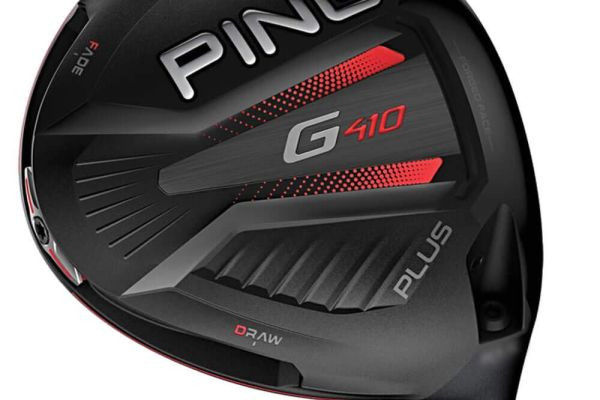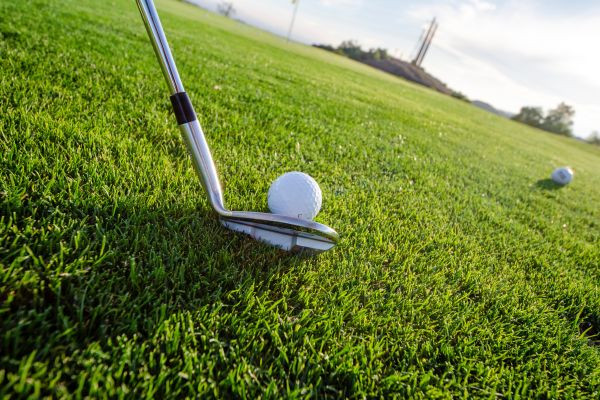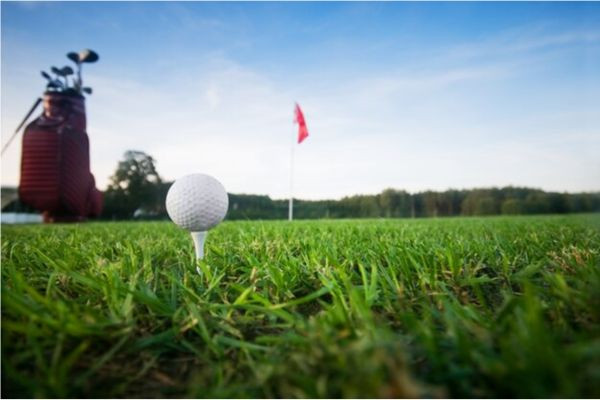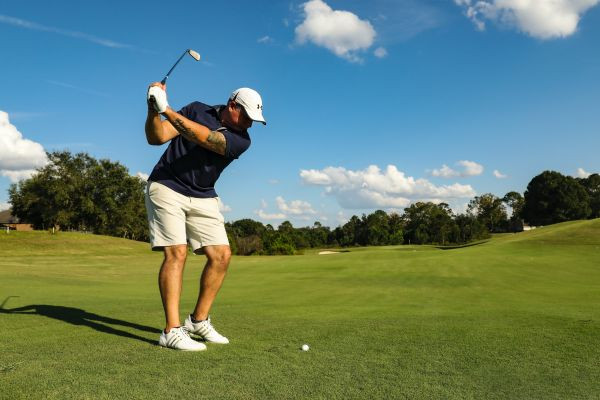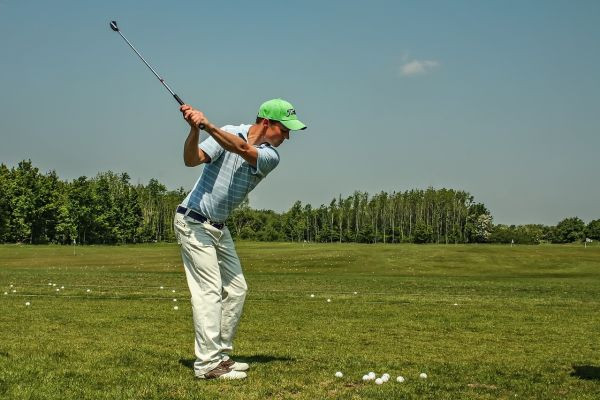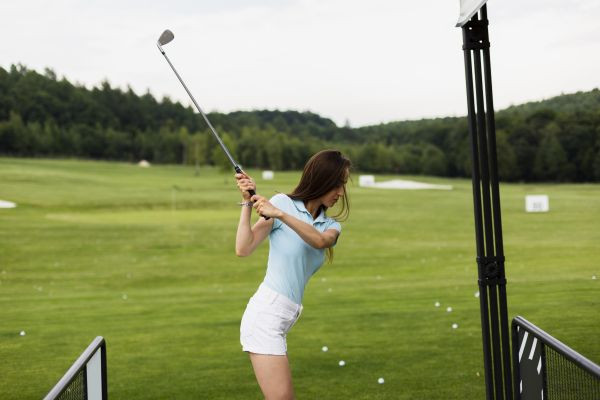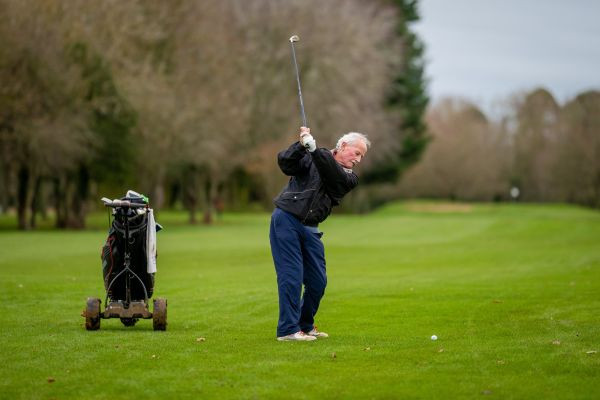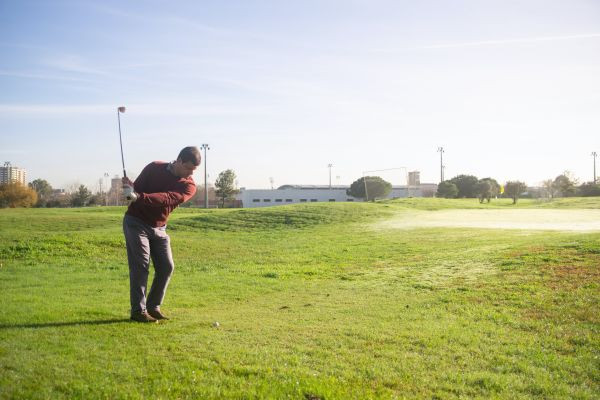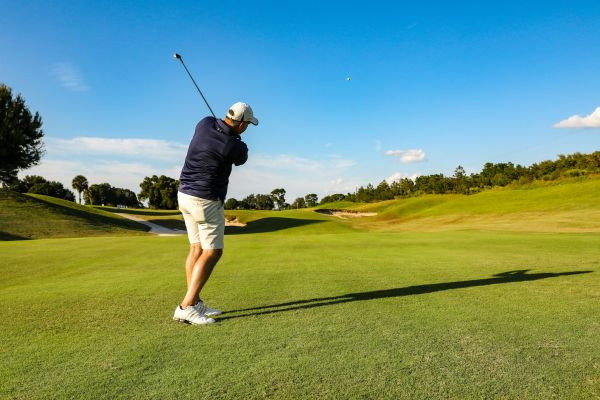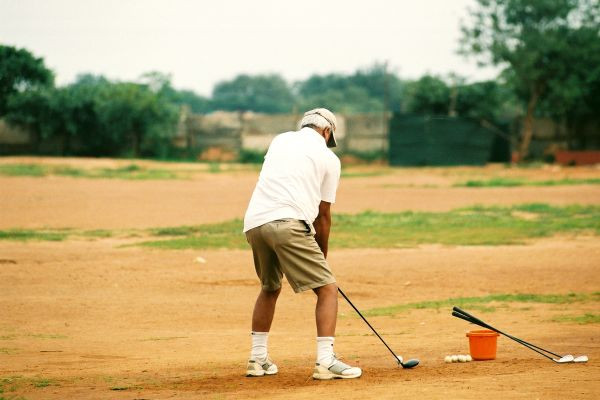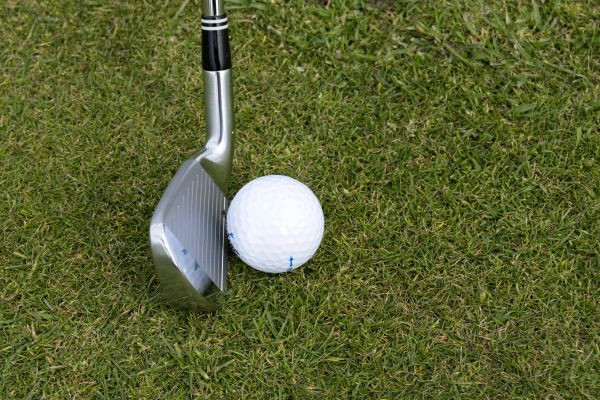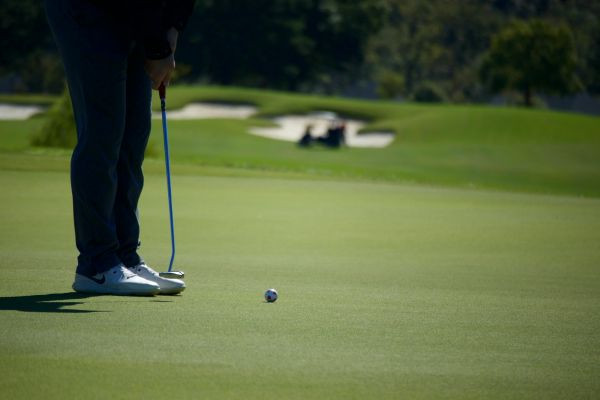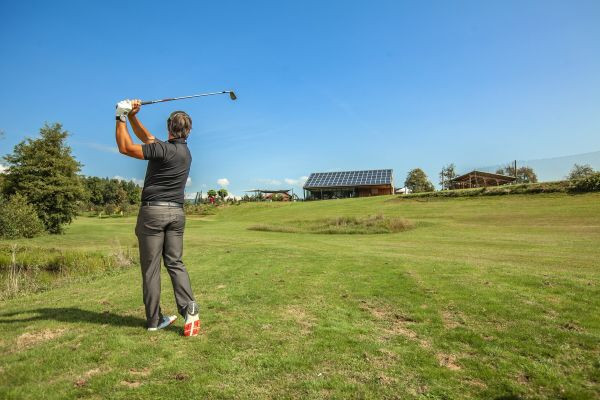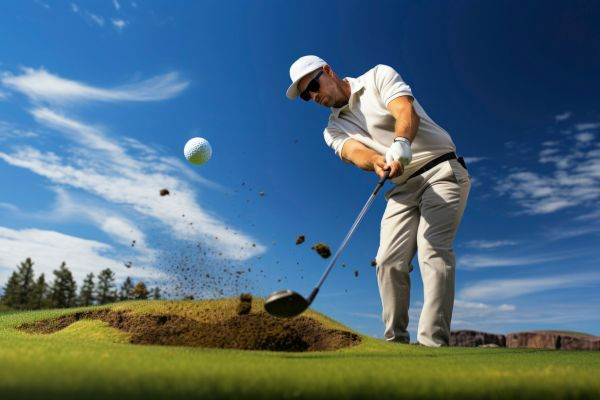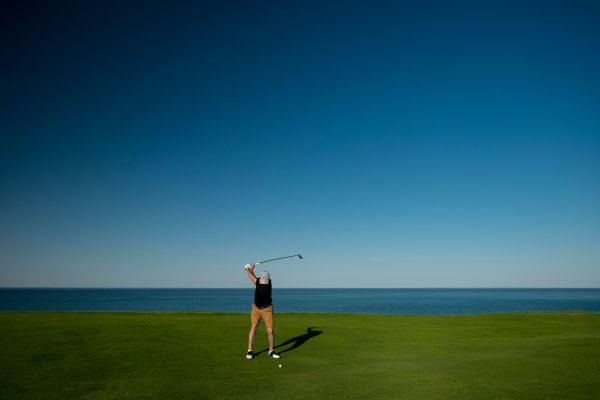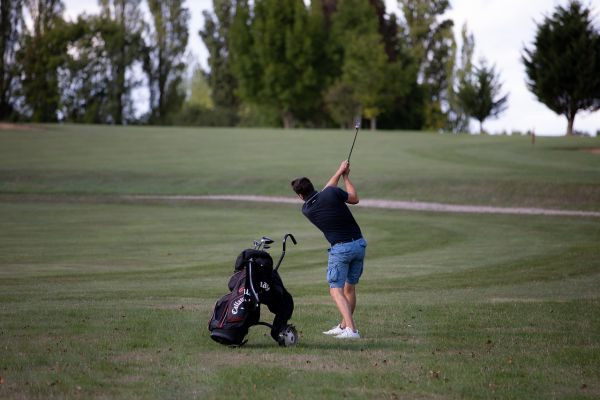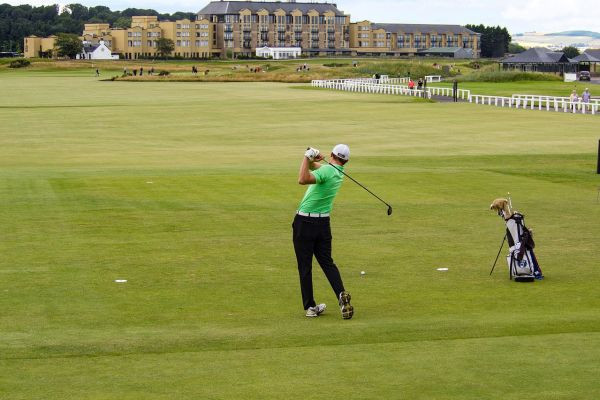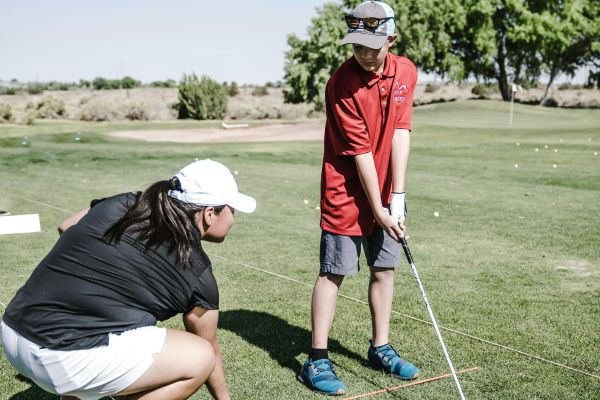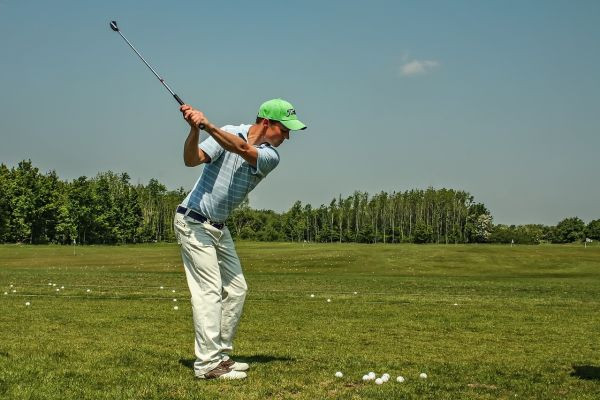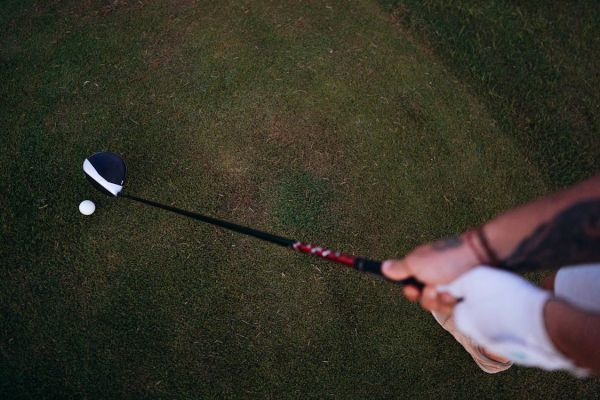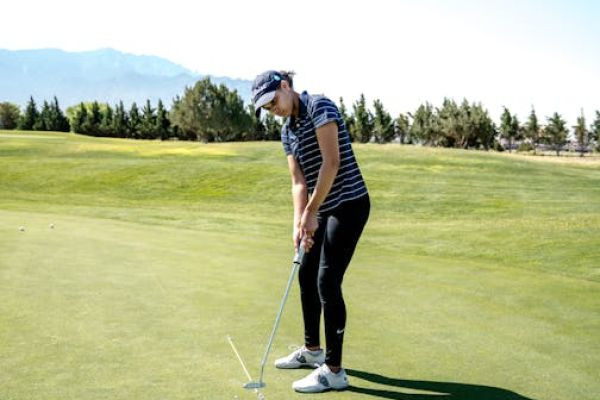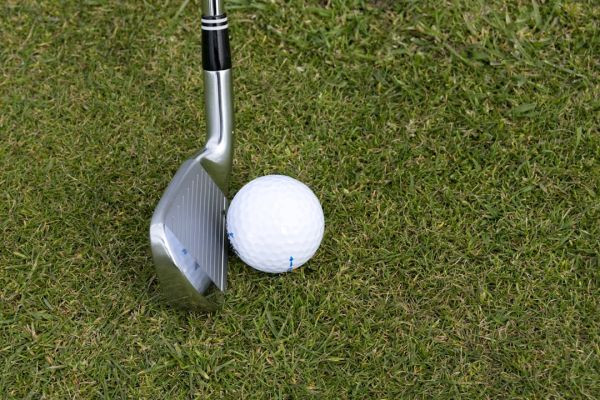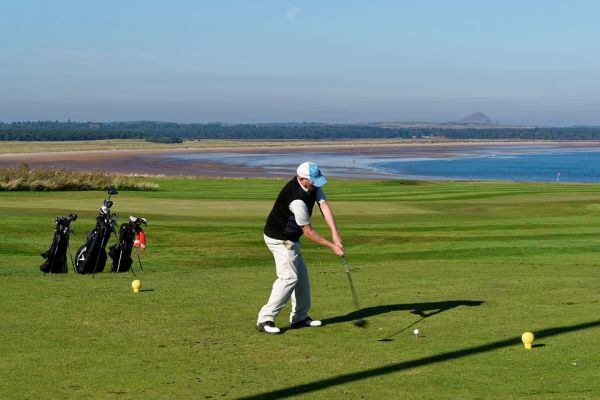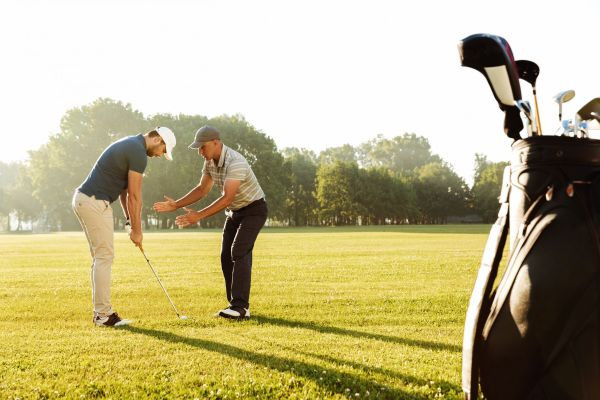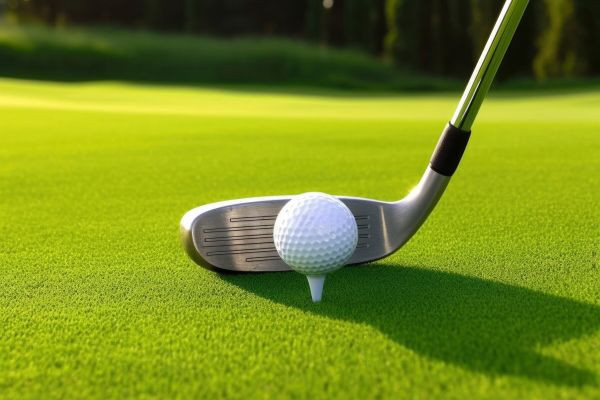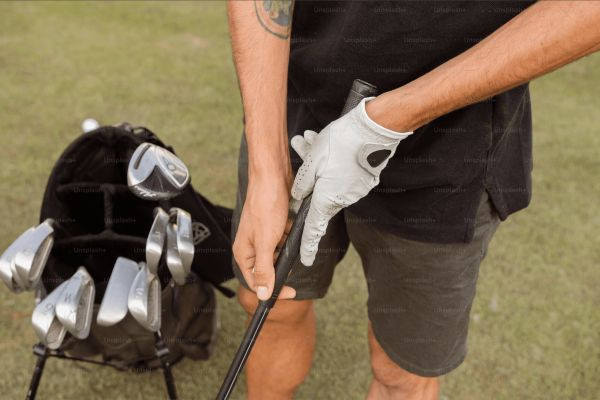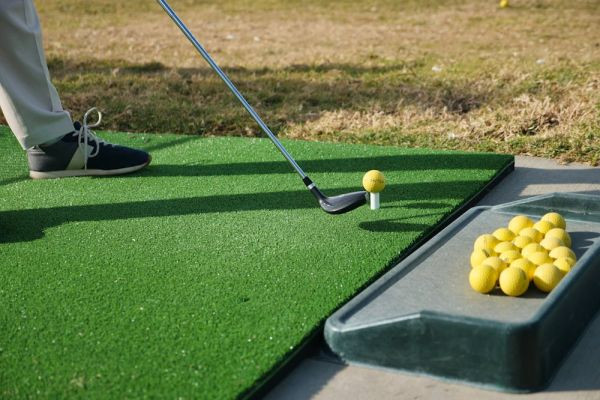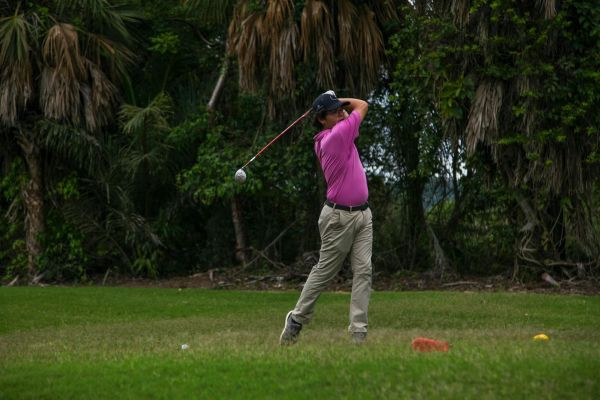Are You Making These Driver Mistakes?
Golf is a game of precision and technique, and mastering the driver is a significant part of achieving success on the course. However, many golfers, both amateurs and seasoned players, fall prey to co..
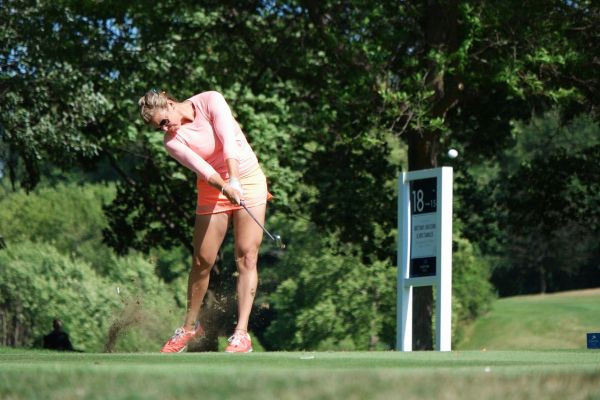
Golf is a game of precision and technique, and mastering the driver is a significant part of achieving success on the course. However, many golfers, both amateurs and seasoned players, fall prey to common mistakes that can drastically affect their game. In this article, we'll explore these pitfalls and provide actionable advice to help you improve your drives.
Mistake 1: Incorrect Tee Height
The height at which you tee the ball is a fundamental aspect of your golf swing that significantly impacts your driving performance. Many golfers, unaware of its importance, often end up setting the tee too low. This seemingly minor oversight can have a substantial impact on the quality of your drives, affecting both distance and accuracy.
Consequences of Low Tee Height
Teeing the ball too low is a common mistake that can lead to a host of problems in your drive. One of the most significant issues is that it promotes a downward angle of attack. When you strike the ball on a downward trajectory you're likely to hit the ball with the bottom part of the club face. This results in reduced loft leading to a lower and weaker ball flight.
A low tee height can also cause the ball to lose trajectory and distance. It also increases the chances of 'skying' where the club hits the ball too high up, leaving a mark on the top of the club and sending the ball shooting upwards with very little forward distance.
Another consequence of teeing the ball too low is the increased likelihood of 'slicing' the ball. This happens when the clubface opens up relative to the swing path at impact causing the ball to veer off sharply to the right for right-handed players or to the left for left-handed players. A low tee can exacerbate this problem by making it difficult to square the clubface at impact.
Ideal Tee Height for Maximum Distance
To maximize the distance of your drives it's crucial to tee the ball at the correct height. The ideal tee height is one where approximately three-quarters of the ball sits above the driver's crown when the club is placed behind the ball. This positioning encourages an upward swing which is essential for achieving longer drives.
When the ball is teed higher it aligns better with the "sweet spot" of the driver – the area on the face that produces the maximum response for distance and accuracy. Teeing the ball up higher allows the driver to make contact with the ball on an upward trajectory which is key for maximizing carry and total distance. This upward strike promotes a higher launch angle with less spin translating into a longer and more penetrating ball flight.
Moreover a higher tee height can also help in reducing the tendency to slice the ball. With the ball positioned appropriately you can achieve a more neutral path and face alignment at impact helping to straighten out your drives.
It's important to note however that the ideal tee height can vary slightly based on individual swing characteristics and the specific driver being used. Golfers should experiment with slightly different tee heights within this range to find the sweet spot that works best for their individual swing.
Mistake 2: Wrong Shoulder Position
The position of your shoulders at the time of addressing the ball is a critical element in the mechanics of a successful golf swing. In the quest for a powerful and accurate drive the alignment of your shoulders plays a pivotal role. Misalignment, particularly a forward shoulder position can significantly hinder your performance.
Effects of Forward Shoulder Position
When the leading shoulder (left shoulder for a right-handed golfer and vice versa) is positioned too far forward – towards the target – it can disrupt the entire swing mechanics. This forward position often results in a loss of 'lag' in the downswing. Lag, a key component in generating power, refers to the angle between the club shaft and the lead arm. Maintaining this angle for as long as possible during the downswing is crucial for generating speed and power.
A forward shoulder position can lead to 'casting' or 'flipping.' Casting occurs when this angle is released too early causing a premature uncoiling of the wrists and a loss of power. Flipping on the other hand is when the wrists actively flip through the impact zone often as a compensatory move for the loss of lag. Both these actions result in a less efficient transfer of energy to the ball leading to shorter and more inconsistent drives.
Studies and analyses by golf instructors like Butch Harmon and Michael Breed have shown that maintaining the correct shoulder position can add significant yards to your drive. Equipment manufacturers like Callaway and TaylorMade also emphasize the importance of body alignment in their instructional content tying it directly to the effective use of their drivers like the Callaway Mavrik and the TaylorMade SIM series.
Correct Shoulder Alignment
The ideal shoulder position at address involves having the leading shoulder slightly behind the ball. This alignment is not just about positioning but also about setting up the body in a way that allows for an effective swing path and angle of attack.
When the leading shoulder is slightly behind the ball it naturally promotes an inside-out swing path which is essential for powerful, accurate and consistent driving. This position also allows for a better retention of lag as the downswing begins ensuring that the stored energy in the golf swing is released at the right moment – through the impact zone.
Moreover correct shoulder alignment plays a significant role in achieving the optimal angle of attack. With the driver a slightly upward angle of attack is desirable. This helps in launching the ball with a higher trajectory and lower spin key factors in maximizing distance. Data from launch monitors like TrackMan and FlightScope show that a positive angle of attack can significantly increase total distance. For instance professional golfers who average drives of over 300 yards typically hit up on the ball by 1 to 5 degrees.
Furthermore the correct shoulder position aids in the overall balance and stability of the swing. When the shoulders are properly aligned it is easier to maintain a solid and balanced posture throughout the swing which is crucial for consistent ball striking.
Mistake 3: Ineffective Angle of Attack

Source:https://pixabay.com/photos/st-andrews-old-course-golfers-tee-1591274/
The angle of attack (AoA) in a golf swing refers to the direction the clubhead is moving (up or down) at the point of impact with the ball. This angle is a critical determinant of the ball's trajectory and spin and consequently the overall effectiveness of the drive.
The Downward Swing Issue
Many amateur and even some professional golfers face a problem when it comes to driving the ball; they tend to swing downwards. While this downward swing may work well for iron shots, where the goal's to strike the ball and then hit the ground it can be detrimental when using a driver. The result is often a lower launch angle and higher spin rates, which ultimately leads to reduced distance and accuracy.
Based on data, from launch monitors like TrackMan it has been observed that the average amateur golfer has an angle of attack between 1 and 5 degrees when hitting with their driver. This negative angle of attack differs from professional players who typically have a positive angle of attack contributing to their ability to drive the ball longer distances.
Achieving the Optimal Angle of Attack
To achieve distance and accuracy while driving golfers should aim for a positive angle of attack. By striking the ball on an ascending trajectory they can achieve a higher launch and lower spin rates. This combination is crucial for achieving straighter drives.
The data from launch monitors strongly supports the idea that having an angle of attack can significantly increase the distance of your drives. For example by adjusting the angle of attack from 2 degrees to +2 degrees you may add up to 20 yards or more to your drive depending on factors like clubhead speed.
Mistake 4: Poor Ball Position
One common mistake golfers often make is ball positioning. Where you place the ball relative to your stance can greatly affect the angle of attack and consequently impact the quality of your drive.
Common Ball Position Errors
Placing the ball back in your stance frequently leads to hitting the ground before making contact with the ball (known as "fat" shots) or striking at a downward angle both of which are inefficient for driving. On the other hand positioning the ball far forward can result in "thin" shots or a tendency to "slice" the ball.
While there may be variations, among golfers based on swing mechanics, extensive research and professional insights have provided general guidelines for achieving an optimal position. Take, for example, known instructors such as Hank Haney and Sean Foley. They place emphasis on the significance of ball positioning in their teachings.
Ideal Ball Position for Consistent Drives
To achieve powerful drives it is important to position the ball in line with the edge of your leading shoulder. This specific placement allows the club to reach its lowest point before striking the ball resulting in an upward angle of attack. This recommended position is supported by research and advanced analytics offered by golf swing analysis systems like Swing Catalyst. These systems provide representations of swings. Assist in identifying the optimal ball position for each individual player.
This alignment also enables a driver to make contact with the ball on the portion of the clubface, commonly known as the" spot." Striking the ball in this area ensures energy transfer. Promotes a higher launch angle with lower spin-- an ideal combination for achieving greater distance.
Mistake 5: Incorrect Stance Width
One common mistake that many golfers overlook or misunderstand is stance width. Stance width plays a role, in aspects, including balance and generating power. It is particularly important when setting up for a drive.
Narrow vs Wide Stance
Narrow Stance: If your stance is too narrow it can limit your power generation. Make it harder to maintain stability during your swing. It often results in upper body movement and inconsistent ball striking. Golf biomechanics experts, including Dr. Greg Rose from the Titleist Performance Institute (TPI) has emphasized that a narrow stance restricts hip rotation, which is essential for generating power.
Wide Stance: On the other hand if your stance is too wide it can hinder weight transfer. Restrict the natural body rotation required for an effective swing. This may lead to a loss of power and difficulty in maintaining balance. Golf swing analysts have observed that many amateur golfers mistakenly believe that a wider stance provides stability without realizing its impact on their swing mechanics.
Finding the Right Stance for You
While there may be variations based on physicality and personal swing styles a general guideline suggests that an ideal stance width should be approximately shoulder width apart. This width allows for balance. Facilitates unrestricted hip and shoulder turns during your swing.
Remember to find the balance in your golf stance to maximize power generation while maintaining stability throughout your swing.
Many golf equipment manufacturers, like Callaway and TaylorMade offer guidance on the width of your stance in their materials. They align these recommendations with the specifications of their drivers, such as the Callaway Epic Flash or the TaylorMade M5/M6 series.
An useful method to determine your stance is by jumping a few times and observing where your feet naturally land. Typically this landing position represents a powerful width for your golf swing. Advanced coaching and training facilities also utilize tools like force plates to gather data on how stance width impacts weight distribution and balance during the swing.
Mistake 6: Overlooking the Compression Line
One common mistake amateur golfers make is disregarding the importance of the compression line. Understanding this concept is crucial for achieving an effective drive.
Understanding the Compression Line
The compression line refers to an imaginary line that extends from your lead ankle to your shoulder at the moment of impact with the ball. To generate power in your drive this line should be tilted away from the target. This tilt ensures that you are in a position to hit up on the ball, which significantly contributes to maximizing distance and efficiency in your drive.
Renowned golf instructors such as Butch Harmon and David Leadbetter emphasize the significance of this alignment for achieving an effective sequence in your swing. This concept is backed by analysis from systems like Gears Golf, which demonstrates how the body's position at impact affects both the path of the swing and the angle of attack.
Practical Tips for Proper Alignment
When you address the ball make sure your head and shoulders are slightly positioned behind it. This setup establishes the correct line of compression. This encourages an upward angle of attack, which is crucial, for driving the ball farther.
Drills for Compression Line: One effective exercise involves placing a stick on the ground pointing towards your foot but angled away from the target. Practice your swing while keeping the angle between your leading shoulder and the stick. This visual aid helps you understand and feel the correct body tilt.
Video Analysis: Utilizing tools like V1 Golf for video analysis can be helpful in visualizing your compression line and receiving feedback for adjustments. It's particularly enlightening to compare your stance and swing with those of golfers often showcased in these software platforms.
Mistake 7: Neglecting Club Head Speed
Players aiming to improve their driving distance often overlook the importance of club head speed. Club head speed plays a crucial role in how effectively you can drive the ball.
The Importance of Club Head Speed
In golf higher club head speeds are associated with increased ball velocity and subsequently longer distances. The principle of golf revolves around the laws of physics; the faster the club heads speed when it hits the ball the more energy is transferred, leading to longer shots.
Esteemed golf instructors, like Hank Haney and Michael Breed stress this point often emphasizing the connection between increased club head speed and improved driving performance. In addition golf equipment manufacturers such as Titleist and Callaway create drivers like the Titleist TSi series and Callaway Epic Speed to optimize energy transfer during swing speeds.
Techniques to Increase Club Head Speed
Enhancing your club head speed isn't about swinging your arms faster; it involves a combination of refining technique and physical conditioning. One crucial technique is developing "lag". Mastering release timing.
Lag and Release Techniques: Developing a good lag in your swing means sustaining the angle between your arm and club shaft for as long as possible during the downswing. This stored energy, when released correctly at impact significantly amplifies driving power. Training aids, like Swingyde can assist golfers in experiencing and improving this lag sensation.
Timing the release correctly, a skill that professional golfers continuously refine, ensures that the stored energy is effectively transferred to the ball at the moment maximizing the distance it travels.
Physical Fitness Routines: When it comes to achieving club head speeds physical fitness routines play a role that cannot be emphasized enough. It's important to focus on building core strength, improving flexibility and enhancing conditioning.
Tailored fitness programs designed for golfers such as those created by TPI (Titleist Performance Institute) offer exercises that enhance the body's ability to generate and transfer power during a swing. Scientific studies have also proven that products like the SuperSpeed Golf Training System can increase swing speed by utilizing specific training principles.
Advanced Tips for Mastering Drives
To further improve your driving skills it is beneficial to delve into advanced tips that explore aspects of golf techniques, physical fitness, practice routines and even the mental aspects of the game. Each of these components plays a role in elevating the quality of your drives.
Lag and Release Techniques
One key technique for enhancing driving power is developing a lag in your swing. Lag refers to the angle between the club shaft and the lead arm. It's important to maintain this angle during the downswing for as long as possible. This technique helps generate a powerful impact when hitting the ball. Golfers can collaborate with coaches and use training aids to enhance this aspect of their swing. Equally crucial is timing the release correctly where the wrists unwind at the bottom of the swing. This ensures achieving clubhead speed just as the club connects with the ball resulting in more powerful drives.
The Role of Physical Fitness
Physical fitness plays a role in golf often underestimated by many. Having a strong and flexible body forms a foundation for a golf swing. Incorporating fitness routines that focus on core strength improves stability and balance while exercises targeting flexibility in areas like hips and shoulders allow for more fluid motion during swings. Golf specific workout programs that include exercises such as twists, planks or yoga can be highly beneficial. These routines not only improve strength and flexibility needed for golf but also help prevent injuries.
Frequently Asked Questions (FAQs)
How high should I tee the ball for the best drives?
To maximize your drives, tee the ball so that half to three quarters of it is above the top edge of the drivers clubface when it's at rest. This tee height allows for an angle of attack promoting a strike on the ball. As a result you'll experience launch and lower spin, which contribute to more effective drives.
What is the ideal shoulder position for a powerful golf swing?
The ideal shoulder position in a golf swing is to have your leading shoulder (left shoulder for right handed golfers and vice versa) slightly behind the ball at address. This alignment helps you maintain lag and generate power throughout the swing. It also encourages a swing path and angle of attack which are essential for effective driving.
How does the angle of attack affect my golf drives?
The angle of attack in golf drives plays a role in determining both trajectory and spin on the ball. A downward angle of attack often results in lower launch angles and higher spin rates, which can reduce distance. On the other hand an upward angle of attack leads to higher launches with less spin maximizing driving distance.
Where should I position the ball for consistent driving?
To achieve optimal driving, position the ball in line with the inside heel of your leading foot. By positioning the club in such a way that it reaches its lowest point before making contact, with the ball you can create an optimal setup for striking it upward. This technique allows for a combination of distance and accuracy in your drives.
What's the significance of the compression line in golf?
In golf there is an imaginary line called the compression line that runs from your leading ankle to your shoulder at impact. It should be tilted away from the target. This line serves as a guide, for aligning your body to ensure energy transfer during your swing. Following this alignment helps you achieve precise drives.


